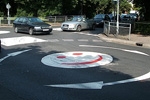Football
The world of research looks pretty drab alongside the passion and excitement of the beautiful game
David Iddiols of HPI has been involved with his local football club, Hanwell Town FC, at pretty much every level. In the 1980s he wore the number nine shirt as centre forward, and later went on to become manager. He’s now the club president.
Football clubs evoke more brand loyalty than any product, Iddiols says – even if they go bust. “If you went to a restaurant and it was no good, you’d maybe give them one more go, and then never go again. If you buy a jar of coffee and it’s rubbish, you’d get a different one next time. But football has this loyalty with it. If you’re a Sunderland supporter, you carry that with you the rest of your life.
“Football has a lot of passion about it, and sometimes research can be seen as a bit grey and not terribly exciting. The industry hasn’t done a bad job of shaking off that kind of perception, but there’s still that image that it’s a bit bland. Football instills that passion and flair with people, whether they’re playing or watching. We need to think about how we can really exhibit our talent and flair in research.
“People ask me why I still do it, but it is still quite exciting to take challenges around brands and communications and that sort of stuff. I’d recommend research as a career because it’s so varied, but the image of the industry remains less glamorous, obviously, than the stuff that goes with football.”
Teachers
Research is useless if nobody learns from it. Think of your debrief as a classroom
All across America, teachers are standing up in front of high school students, talking at them, and telling them to take notes. At the same time research executives are getting up in front of their clients and doing the same thing.
Bert Bower of educational publisher TCI has based his career on the belief that this isn’t the best way for schoolchildren to learn, and a few years ago he got together with market researcher Mike Browning, who was convinced it wasn’t the best way for businesspeople to learn either.
Bower, who still keeps his hand in as a high school teacher in California, believes that, because people learn in different ways, only a small proportion get anything out of being lectured at. The problem is that teaching in an engaging way is, frankly, harder. When teachers are struggling just to keep a class under control, it’s easy to take refuge in the standard lecture format.
Bower’s approach to teaching the First World War is to upend the desks, put them in rows, and have the kids spend the whole lesson ‘in the trenches’. By the end, he says, the kids are suddenly full of questions and start doing their own research. “Then you can lecture to them non-stop,” he says. To use Bower’s words, it’s about letting go of being the ‘sage on the stage’ and becoming the ‘guide on the side’.
Bower’s partner Mike Browning applies similar techniques in research presentations. For a major jeans maker his agency Bluewater Learning created a day-long session for 70 top managers in which they looked at a segmentation study, decided which segments were most important, then got into groups to perform skits bringing the segments to life.
Critics have called the methods “juvenile” and “insulting”, but Bluewater’s view is that it’s more insulting to lecture someone until they zone out. Presenters who are hooked on standing at the front and talking at people need to realise that this is not the way to engage a broad audience.
Street art
Is it art or vandalism? Who cares – it’s spontaneous and unfiltered
23-year-old Julian Cox of Tuned In Research has been doing street art around London since he was a teenager, under the pseudonym Loci. Although he dislikes the words used to define what he does, he begrudgingly describes it as ‘context-based street art’.
Cox says that staying involved gives him a first-hand understanding of youth culture, as well as encouraging him to “see things in a different light”. He sees street art as an example of young people expressing themselves through the means they choose, rather than through the ones that are normally offered to them. Call it art, call it vandalism, but if we’re using the research terminology the important thing is that it’s spontaneous and ‘unfiltered’.
“I think street art, or graffiti, or whatever you call it, gives a voice to young people and allows them to comment on their world,” said Cox. “I’m possibly looking at it through tinted glasses – I don’t think everybody out there is trying to create a dialogue, but they often are, even if it’s not obvious.
“I’m not into writing my name so much. I try to search out the abandoned spaces – things that need a bit of decoration. I paint things I like and that I think other people will like, that’s what I think is important. I’m not trying to show other people that I’m out there – it’s about making something interesting, and hopefully other people think it’s interesting as well.
“Young people are seen in quite a negative light at the moment. There’s quite a wide divide between the adult world and the youth world – knife crime, music downloading, all these things put distance between them. I think the human mind likes to lump things together instead of pulling them apart and looking at them in a nuanced way. It’s about seeing complexity rather than simplicity, and that’s the way I like to approach research.”
The slow movement
Just because we can do research fast doesn’t necessarily mean we should
The ‘slow movement’ began as a reaction against fast food. Adherents want to go back to a focus on local produce, organic methods, agricultural biodiversity, and taking the time to savour food properly. From here the movement has spread to areas including design, economics, art, travel and parenting. But not yet market research.
Tom Simpson of Simpson Carpenter says the time has come. There is a constant pressure for speed in research, but this often comes at the expense of quality, he says. “We feel we have to do things quickly and you have to wonder why. I’m not railing against speed, I’m railing against losing quality. It’s a poor trade off. Understandably a lot of clients are under a lot of pressure. Decisions to spend are pushed back later in the day than they have been in better times, and that squeezes the time available. I think also there’s a feeling that because we can now do things quickly we should do things quickly. You can send a questionnaire overnight and get results the following day, but if you ask the wrong question it doesn’t matter how quickly you do it. If the sample isn’t representative, it doesn’t matter how quickly you do it. Rubbish is rubbish no matter how quick it is, and bad data can be worse than no data at all.”
“We try to say that we as an industry are no longer just data deliverers, we’re an insight industry that helps business and government make decisions. But no matter how quickly you collect it, deriving insight and working out what it means for your clients is a painstaking process.”
It’s all about priorities, said Ian Wright of OTX at a recent industry event. “It’s about working out what needs answered quickly and what questions need more time.”
The movies
Hollywood filmmakers know how to tell a story, but they also know how hard it is to predict success
As one of the trustees of the Phoenix Cinema – an art house cinema in North London – Anthony Tasgal of POV Marketing and Research is often called upon for his marketing experience. He also works his movie enthusiasm into the training he does for advertising and research agencies. “I use quite a few film examples when I’m talking about how to present, how to take data and turn it into meaning,” he says. “There’s quote from Jean-Luc Godard, the famous French film director: ‘Every film should have a start, a middle and an end – though not necessarily in that order.’ Very often in research presentations people start with, ‘This is the background, this is who we are, this is what we do…’ and particularly these days when clients don’t have much time, it’s quite sensible to start with the end – what’s the big idea? What’s the story?
“Another example comes from William Goldman, who wrote a famous book about being a screenwriter. He says in Hollywood, ‘nobody knows anything’. Similarly in research and marketing, we think we know everything about the brand, the client, the study, but the point Goldman makes is, if you look at Hollywood history, they do research, but they still can’t tell how well a film’s going to do. At the time Speed came out everyone thought, ‘That was great, let’s make Speed 2’, and it was crap. And they don’t spot films that come out of nowhere, like Sideways a few years ago, and An Education, which is a British film that nobody spotted. Always look for the unknown unknowns – don’t always ask the obvious questions in the obvious ways.”












0 Comments